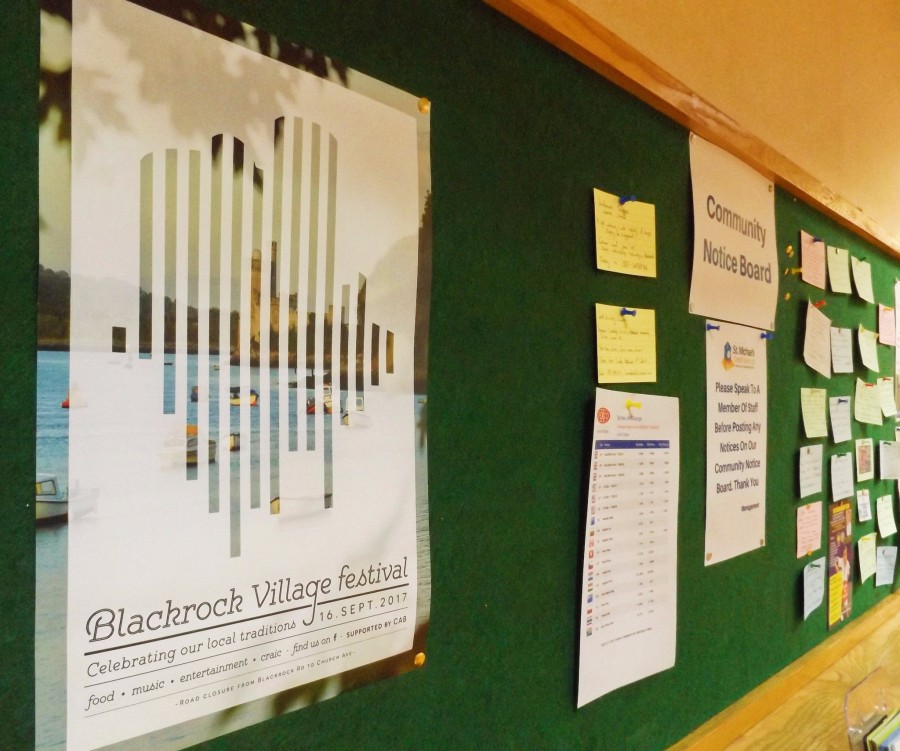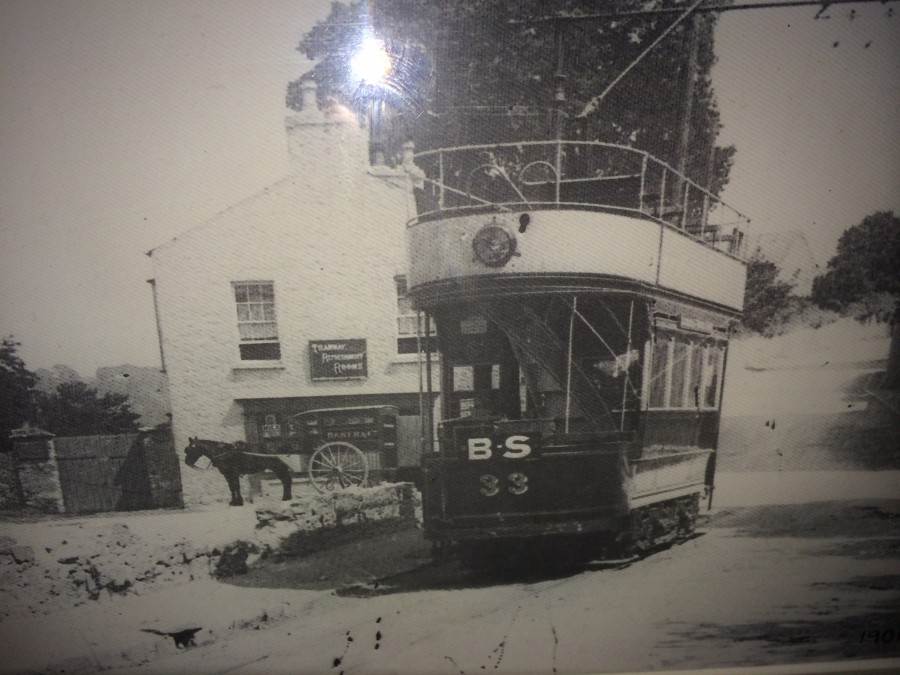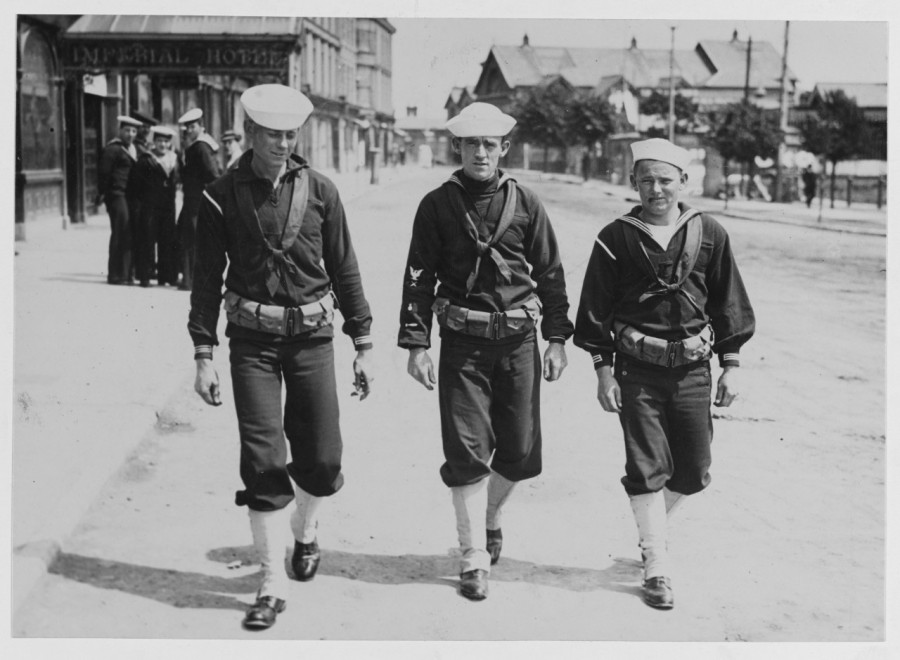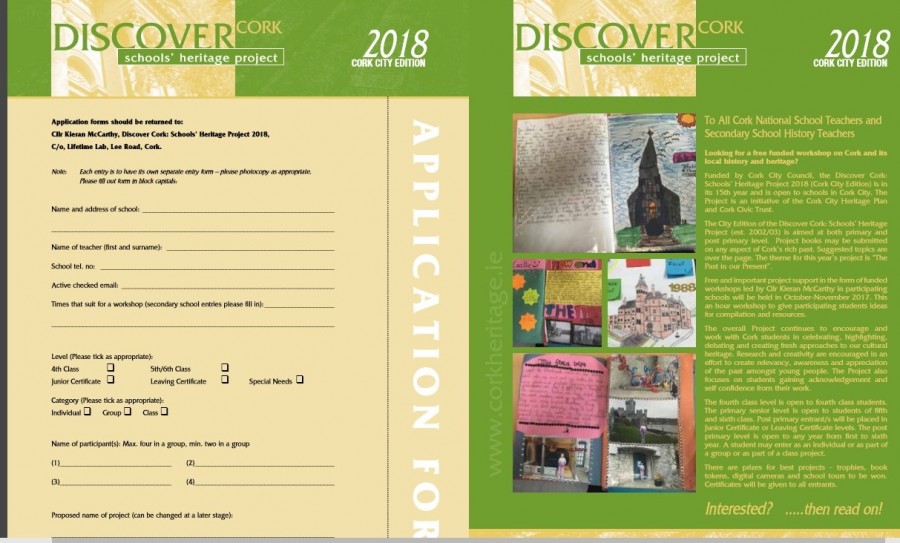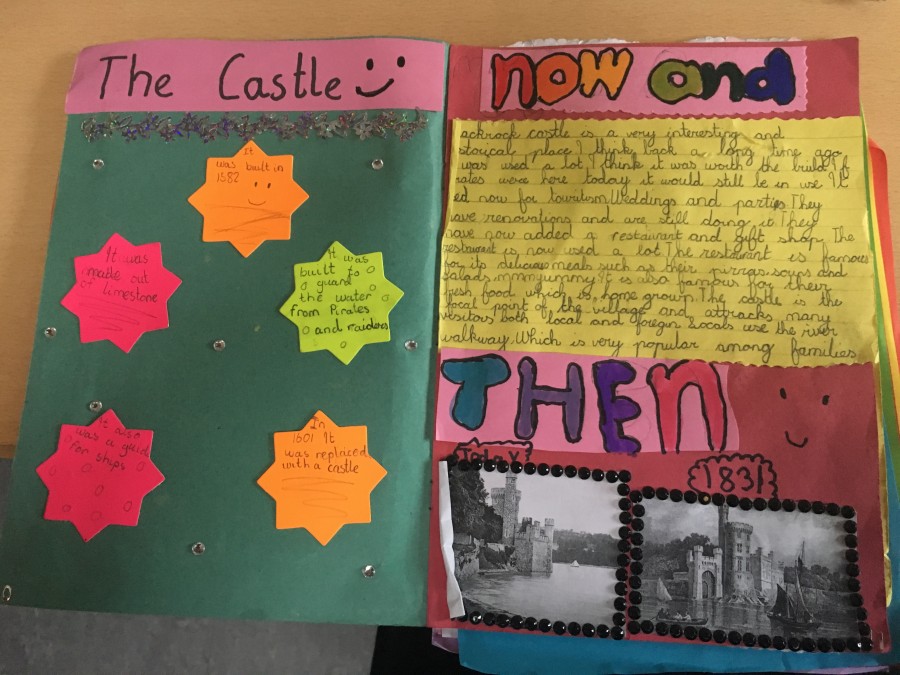Monthly Archives: September 2017
Myth Busting, Cork City Council & Cork City Expansion
Advertisement in Irish Examiner, taken out by Cork City Council, 16 September 2017
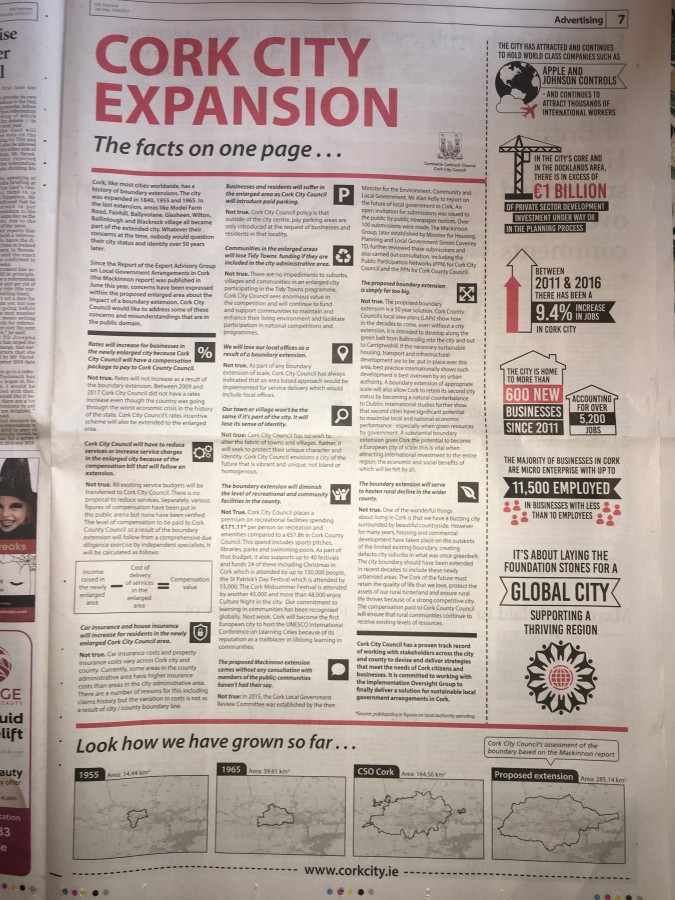
Blackrock Village Festival, 16 September, 2pm-6pm
Kieran’s Our City, Our Town, 14 September 2017
Kieran’s Our City, Our Town Article,
Cork Independent, 14 September 2017
The Wheels of 1917: American Sailors on Cork Streets
In early September 1917, a coast to coast call for military men was made across the United States of America. The calls strove for a quarter of a million men to enlist in the American forces on battle fronts in Western Europe. They were asked to gather at the mobilisation camps. In the first week of September up to 30,000 men were paraded in New York. They were drawn from 26 States and the district of Columbia. This division, which was sent off to France, represented more than half of the states of the United States.
Over the two years between 1917-1919, thousands of US naval personnel would be stationed in Cork Harbour and Bantry Bay, engaging in the war against German U-boats and seeking to ensure convoy security. In September 1917 in Queenstown (now Cobh) according to the diary of American Naval Commander Joseph Knefler Taussig, there were eight American destroyers – Wadsworth, Porter, Shaw, Ericsson, Jacob Jones, Paulding, Burrows, and Sterett – all helping to convoy merchant ships in the Irish sea. Their wide web of facilities in the county by war”s end comprised sites in Cobh, Passage West, Haulbowline (now the Irish Naval Service headquarters), Ringaskiddy, Aghada, Bere Island, Berehaven and Whiddy Island. Aside from their storage and barrack sites, the Americans also set up training areas, recreational centres and a hospital.
The hundreds of sailors involved in these ships were quite the celebrity in the harbour and in the city. In July 1917, the officers of the Cork County Cricket Club wrote to the US embassy in London offering their pavilion and grounds at the Mardyke to the Americans should they need them. The very offer led the commanders of two of the Cobh-based vessels, the USS Melville and the USS Trippe, to think about staging a baseball match between their respective crews. it was decided to use it to raise funds to support the local Queenstown War Workers fund. It was played on a midweek July afternoon before a crowd of 3,000 people. There were many American sailors among them, but the majority were local onlookers.
In addition, some newspaper reports (Cork Examiner & Evening Echo) noted that hundreds of young women each night were drawn to Queenstown to mix with those sailors on shore leave. That was enough to raise the tempers of some sidelined local men. In the city on Monday 3 September 1917 a party comprised of young boys hissed and jeered at American sailors whom they chanced to meet. It started in King street (now MacCurtain Street). American sailors accompanied by young girls attracted the attention of a number of young fellows, who immediately vented their resentment by jeering. They followed the sailors and girls until quite a large crowd gathered and the girls and sailors parted. They passed another number of Americans, and the crowd directed their efforts against these. The crowd followed and jeered at them to the Lower Glanmire Road Railway Bridge. Here the police intervened, and moved the crowd back towards King Street. Near the Coliseum an American sailor, standing in the portico of the theatre, was the centre of attention. It transpired he was attacked by a group of youngsters.
The police continued to move the crowd along King Street, down Bridge street, and on to Patrick’s Bridge. By the time the activity had dwindled somewhat and matters were quieter. But a group of juveniles, bearing a Sinn Fein flag in front, crossed over the bridge in the direction of Bridge Street, where the police were in force. They had not gone, far when the police, with batons in hand, charged them. The party ran down Pope’s Quay, and some stones were thrown, amidst shouts of “Up Dublin” and “Up the Huns”.
Following the city incident, the American sailors were forbidden to come into Cork City. With restricted shore leave in Queenstown there was a number of disturbances there involving American sailors and local civilians. The civilians displayed ill-feeling towards women from Cork City who had been travelling to Queenstown each night to meet the sailors. Police in Queenstown reported several incidents of disorder, but these mostly arose from the Americans arguing among themselves whilst on shore leave. Lively behaviour and a few isolated “scraps” were reported, but there were no assaults or damage to property. Local police confirmed that the glass door of a public house on King Street was broken by a party of American sailors. It is not known if the incident occurred owing to an accident or resentment on being refused drink after authorised hours.
Tensions were heightened on Saturday 8 September 1917 when a Cork labourer was killed during disturbances involving an American sailor at Queenstown. The Haulbowline man, Fred Plummer, was struck by the sailor with a closed fist, his head hitting the concrete flagged footpath of the beach. Plummer was unconscious when taken to Queenstown General Hospital, where he subsequently died from what an inquest found to have been a fracture of the skull.
To highlight the social history of the American Navy in Cobh in 1917, an exhibition has been researched and prepared by archaeologist and historian Damian Shiels. It is designed and produced in association with Sirius Arts Centre, Cobh and is on display till 17 September. It is entitled Portraits: Women of Cork and the U S Navy 1917-1919 and explores the marriage of some American sailors and Cork women. There is also some great information on this era on display in Cobh Museum.
Captions:
912a. American Sailors at Queenstown now Cobh in 1917 (source: Cobh Museum)
912b. U S Sailors patrolling streets of Queenstown (source: Naval History and Heritage Command, Washington)
Cllr McCarthy to stage Songs from the Heart, An Evening of Musical Theatre
Cllr McCarthy to stage Songs from the Heart, An Evening of Musical Theatre
Cllr Kieran McCarthy directs Cork City Musical Society’s “Songs From the Heart, An Evening of Musical Theatre” at the Firkin Crane on Sunday 24 September at 8pm. The Musical Director is Michael Young and the producer is Yvonne Coughlan of Red Sandstone Varied Productions. Tickets are e15 and are online at www.firkincrane.ie
This is Cork City Musical Society’s fourth outing having staged the musical Crazy For You in 2016 and Dreams of the Soul and Sweet Charity in 2015. Founded by Cllr Kieran McCarthy in 2015, it was years of performing in shows and being involved in community work that led Kieran to create the musical society.
Cllr McCarthy advocates that Cork City is vibrant in drama education, various musical genres, musical theatre and all forms of opera, all of which are brought to the Cork masses through stage schools and theatres.
“It goes without saying that a rich vein of musicality runs underneath our city, Cork’s DNA embraces the promotion and development of music as an artistic discipline to be developed and one that brings a community together to engage with and appreciate it. The city in musical theatre terms is particularly blessed by several stage schools, small and large, who promote amongst our young people creativity, skill development, education, performance, community building and audience development, and the charity of sharing their craft, amongst other important traits'”.
“Amateur musical societies are multiple in nature up and down the country. All bring their local communities together under a volunteer and charity umbrella – collaborating and bringing people together to create an outlet for people and to put drama, music and all ultimately form a key cultural vein within towns and villages'”.
“The city proudly can boast being an ongoing European Capital of Culture. Many personalities and more have done so much for music and drama education over many years in the city. All inspire and forge a sense of community, charity of heart, togetherness and education, skill building and lifelong learning approaches”.
Continuing Cllr McCarthy highlighted that Cork City Musical Society in particular “focuses on the aspect of community building and the promotion of musical theatre amongst adults and the idea of inclusivity and self-development for all who wish to engage with it”.
Cllr McCarthy: Open Tramore Valley Park, 11 September 2017
Funding for outstanding capital works and revenue operational costs for Tramore Valley Park will be considered in the context of both the Cork City Council’s Draft 2018 Estimates and, the 2018-2020 Capital Budget Programme. Should the necessary finances be available, the intention is to open the park on a phased basis from late summer/early autumn 2018. A figure of between e.50,000 and e.75,000 per annum has been pitched as needed for staffing.
Kieran’s Question to CE, Cork City Council Meeting, 11 September 2017
Question to CE:
To ask the CE on the current status of Tramore Valley Park and within the emerging budget drafts for 2018, when will the park fully open? (Cllr Kieran McCarthy)
Motions:
That the cut stone and plaques deposited at the Council Depot Store in Mahon be catalogued and re-used in the landscaping of public space in the south east ward (Cllr Kieran McCarthy)
That the Council fix the southern gate and wall at Buckleys Meadow, Blackrock. At the estate’s opening residents had keys but the gate is now damaged and off its hinges (Cllr Kieran McCarthy)
European Opportunity for Elizabeth Fort
Kieran’s Our City, Our Town, 7 September 2017
Kieran’s Our City, Our Town Article,
Cork Independent, 7 September 2017
Discover Cork: Schools’ Heritage Project 2017-18
This year coincides with the fifteenth year of the Discover Cork: Schools’ Heritage Project. Brochures have been sent to all Cork schools. Launched again for the new school term, the Project is open to schools in Cork – at primary level to the pupils of fourth, fifth and sixth class and at post-primary from first to sixth years. There are two sub categories within the post primary section, Junior Certificate and Leaving Certificate. A student may enter as an individual or as part of a group or a part of a class entry.
Co-ordinated by myself, one of the key aims of the project is to encourage students to explore, investigate and debate their local heritage (built, archaeological, cultural and natural) in a constructive, active and fun way. Projects on any aspect of Cork’s rich heritage can be submitted to an adjudication panel. Prizes are awarded for best projects and certificates are given to each participant. A cross-section of projects submitted from the last school season can be gleamed from this link on my website, www.corkheritage.ie where there are other resources, former titles and winners and entry information as well.
Students produce a project on their local area using primary and secondary sources. Each participating student within their class receives a visit and workshop in October 2017. The workshop comprises a guide to how to put a project together. Project material must be gathered in an A4/ A3 size Project book. The project may be as large as the student wishes but minimum 20 pages (text + pictures + sketches). Projects must also meet five elements. Projects must be colourful, creative, have personal opinion, imagination and gain publicity before submission. These elements form the basis of a student friendly narrative analysis approach where the student explores their project topic in an interactive and task oriented way. In particular, students are encouraged to attain material through visiting local libraries, engaging with fieldwork, interviews with local people, making models, photographing, cartoon creating, making DVDs of their area. Re-enacting can also be a feature of several projects.
For over fifteen years, the project has evolved in how students actually pursue local history. The project attempts to provide the student with a hands-on and interactive activity that is all about learning not only about heritage in your local area (in all its forms) but also about the process of learning by participating students. The project is about thinking about, understanding, appreciating and making relevant in today’s society the role of our heritage our landmarks, our oral histories, our scenery in our modern world for upcoming citizens. So, the project is about splicing together activity on issues of local history and heritage such as thinking, exploring, observing, discovering, researching, uncovering, revealing, interpreting and resolving. This year as well there is a focus on the theme – the Past in our Present.
The importance of doing a project in local history is reflected in the educational aims of the history curricula of primary and post-primary schools. Local heritage is a mould, which helps the student to become familiar with their local environment and to learn the value of it in their lives. Learning to appreciate the elements of a locality, can also give students a sense of place in their locality or a sense of identity. Hence the Project can also become a youth forum for students to do research and offer their opinions on important decisions being made on their heritage in their locality and how they affect the lives of people locally. I know a number of students who have been involved in the project in schools over the years who have took their interest further and have gone on to become professional tour guides, and into other related college work.
The project is open to many directions of delivery. Students are encouraged to engage with their topic -in order to make sense of it, understand and work with it. Students continue to experiment with the overall design and plan of their work. For example, and in general, students who have entered before might engage with the attaining of primary information through oral histories. The methodologies that the students create provide interesting ways to approach the study of local heritage. Students are asked to choose one of two extra methods (apart from a booklet) to represent their work. The first option is making a model whilst the second option is making a DVD. It is great to see students using modern up todate technology to present their findings. This works in broadening their view of approaching their project.
This project in the City is free to enter and is kindly funded by Cork City Council (viz the help of Niamh Twomey, Officer) and. Prizes are also provided by the Cork Civic Trust (viz the help of John X Miller), Lifetime Lab, Lee Road, Learnit Lego Education, and Sean Kelly of Lucky Meadows Equestrian Centre, Watergrasshill (www.seankellyhorse.com). There is also a County Cork edition. Overall, the Schools’ Heritage Project for the last fifteen years has attempted to build a new concerned generation of Cork people, pushing them forward, growing their self-development empowering them to connect to their world and their local heritage. Spread the word please.
Captions:
911a. Front cover of 2017-18 brochure for Discover Cork Schools’ Heritage Project (source: Kieran McCarthy)
911b. Page from school history project on Blackrock Castle 2017 (source: Kieran McCarthy)
Blackrock/ Mahon Library Update, September 2017
Disappointment has been expressed by Independent Cllr Kieran McCarthy to this week’s news that the old HSE building in Lakesland Crescent off Avenue De Rennes, Mahon has not been deemed an accessible location for a potential Blackrock/ Mahon Library. Earlier this year, the ex-HSE building was identified as a potential site by the City Council.
Cllr McCarthy noted: “The provision of a Library for the South East Ward, to serve the communities of Blackrock and Mahon, is one of the objectives of the current Libraries Development Programme. As a public rep who has been fielding questions and motions on this project for several years, I just feel now the campaign has gone back a number of steps; we had two potential sites, one at the old Abode site and one at Lakelands Crescent, but now we’re back to the drawing board looking for a location. It is crucial that a location is found and that the project is gotten back on track”.
The City Librarian, Liam Ronayne, inspected the former HSE Health Centre Building at Lakelands Crescent and reviewed the potential of the location in view of the criteria listed above. He noted; “While the site in question has a generous amount of space, and is close to schools, it does not meet the criteria of being easily accessible from both parts of the peninsula, and of having a high profile on the street. I do not therefore believe that it would be a suitable location for a Library for the South East Ward. I accept that it will not be easy to find such a location, but I and my staff will be treating this as a priority in the months ahead”.
